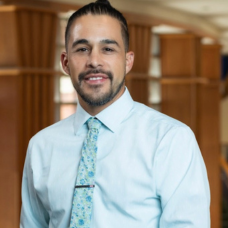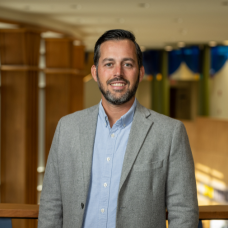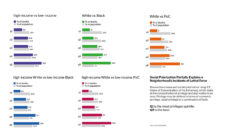Police in the U.S. kill Black men–like 29 year old Tyre Nichols–so often that police violence is the sixth leading cause of death for young Black men.
While this picture is bleak, it does not represent the full extent of police violence, as data are not accurately or comprehensively collected. Thus, the reality of how police harm individuals, families, and communities with psychological, sexual, and physical violence is even worse than the data show.
Police do not harm people randomly. Black people are three times more likely than White people to be killed by police, and young Black men are five times more likely to be injured. Black trans people are also more likely to experience verbal, sexual, or physical violence from police. Police disproportionately harm people struggling with substance use, unhoused people, and sex workers. Some advocacy groups estimate that half the people killed by police have a psychiatric disability.
Ending police violence and the systemic harm it engenders doesn’t require reform. Public health is about prevention. Preventing contact with the police from happening in the first place.
Alternative response programs are one strategy for preventing the harms of policing while supporting community safety. Unlike other popular reform efforts to train police or partner police with social workers, alternative response programs do not include police on the team or work with police when responding.
Alternative response programs are the kinds of systems of care that we need public health voices to advocate for. The health of the public depends on it.
Here’s how independence from police can be created:
People come in contact with police most often during traffic incidents. Alternative response programs can be first responders to these and other low-level offenses like noise or loitering complaints. They can also conduct wellness checks or de-escalate conflicts. Many programs start by responding to people in mental health crises. Evaluations have found that alternative response programs reduce crime, reduce the number of incidents the teams are designated to respond to, and are more cost-effective than the police.
These results reflect how alternative response teams are oriented around care, not criminalization and use an entirely different set of tools. Alternative response teams seek to understand and meet people’s needs, linking them to support services or providing immediate resources like food, transportation, or a warm, safe place.
These programs are growing across the country, and while each looks differently, there are a few critical features they have in common.
First, people directly affected by police violence are leading the effort to develop, design, implement and oversee these programs. They are program staff and/or first responders. Effective programs are designed locally and are tailored to community needs.
Second, there are absolutely no police involved. Program operations, therefore, take a variety of arrangements. For example, the CAHOOTS program in Oregon is run out of a community clinic, while the San Francisco Street Crisis Response team is administered through a partnership between the Department of Public Health and the fire department.
People seeking help from an alternative response team typically call their direct lines or numbers other than 911, since 911 call centers may be operated by police. Other programs work to divert 911 calls to alternative response teams. Ensuring that police are not involved when people contact alternative response teams is essential, as police involvement when it is not expected immediately undermines trust.
Finally, effective alternative response program are made up of responders with diverse forms of training and experience. Teams typically include a paramedic, a behavioral health clinician, and usually a peer or person with lived experience, someone like a bartender who knows how to de-escalate tense situations.
Our recommendations identify efforts that public health workers, researchers, and students can take to support the expansion of alternative response programs. The recommendations are guided by public health values and principles, and are centered around partnership, advocacy and evaluation.
Partnership. We recommend public health folks partner with local efforts to address police violence in their own communities and support these efforts by bringing in the public health data and research demonstrating the harms of police violence and the potential of a care-based approach.
Advocacy. Public health folks can communicate with local elected officials emphasizing that policing is a public health issue that warrants intervention. Public safety is often considered a topic of expertise for the police. However, public health research suggests that many public safety issues are exacerbated by armed police and a lack of supportive social services. Public health offers critical framing that can reorient power and resources toward care, equity, and prevention and away from punitive and violent systems.
Support evaluation efforts. Finally, there is a lot of variation in how alternative response programs are structured, staffed, and rolled out around the country. Public health folks can support evaluations that help identify the critical features of these programs that should continue to be developed in communities across the U.S.
Alternative response programs are the kinds of systems of care that we need public health voices to advocate for. The health of the public depends on it.
Photo via Getty Images

















